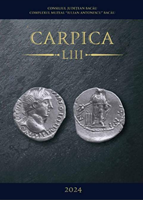Aderarea României la Axa Berlin-Roma-Tokyo
Romania’s Accession to the Berlin-Rome-Tokyo Axis
Author(s): Bianca-Ioana HanganuSubject(s): Political history, Social history, WW II and following years (1940 - 1949), Historical revisionism
Published by: Complexul Muzeal “Iulian Antonescu” Bacău
Keywords: Axis; World War II; 1940; revisionism;
Summary/Abstract: In November 1940, Ion Antonescu, who led Romania between 6 September 1940 and 23 August 1944, signed the country’s commitment to the Tripartite Pact, the core instrument of the Axis. Romania, for as long as it could, sought to balance its traditional ties to France and the United Kingdom, the growing influence of Nazi Germany and the Soviet Union’s unwavering claim over Bessarabia-Northern Bukovina. However, seeing the Versailles peace system failing and its territories being taken, Romania decided to shift its foreign policy towards Germany, which at the time appeared to be the only power capable of guaranteeing its territorial integrity. Further encouraged by prolific commercial exchanges and similarities between the regimes’ ideologies, the Romanian-German alliance would be forged despite the absence of a treaty specifically formalising it. While this article is not intended to provide an exhaustive analysis of the commercial relations between Romania and Nazi Germany, nor of the so-called Romanian Holocaust, which deserve separate exploration, this article addresses them to the extent necessary to understand Romania’s accession to the Axis.
Journal: Carpica
- Issue Year: 2024
- Issue No: LIII
- Page Range: 194-205
- Page Count: 12
- Language: Romanian

